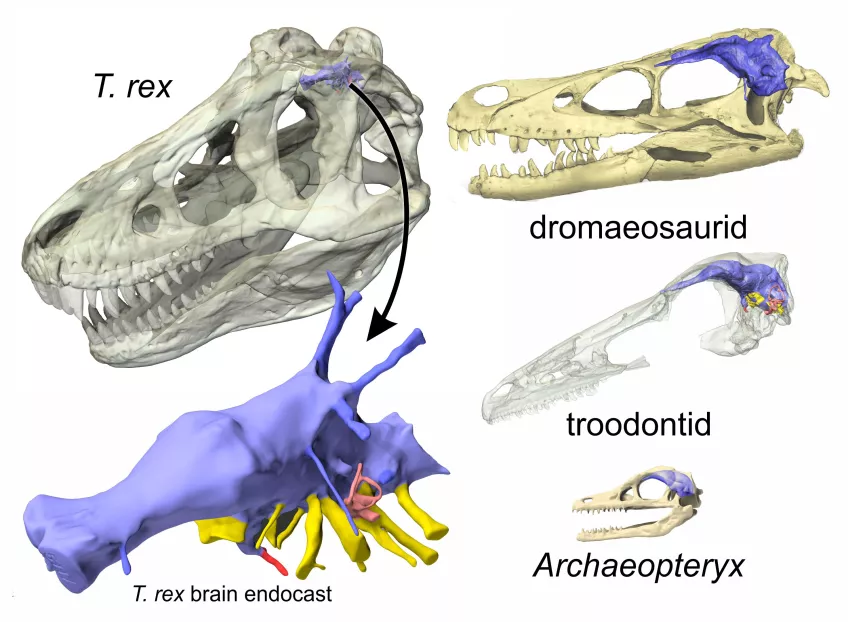Palaeontology
The palaeontology team has members in Scotland and the US and together have collected high-resolution CT scans of about 300 fossil reptiles and birds, including a diversity of extinct species on the line to modern-day crocodilians, dinosaurs like Tyrannosaurus rex and Stegosaurus, and numerous species spanning the dinosaur-bird evolutionary transition.
Their published work has shown that many dinosaurs had larger and more complex brains than previously thought, and that the first birds had brains similar in size and shape to their dinosaur ancestors but then rapidly encephalized after the end-Cretaceous extinction. Lawrence Witmer is an anatomist who pioneered the use of CT scanning to study fossils, and recently his team has published proof of concept data on using brain endocast surface-area measurements to predict volumes of neural regions in birds and high-resolution 3D geometric morphometric studies quantifying brain and skull shape. Stephen Brusatte is a phylogeneticist who uses statistics to study evolutionary trends in deep time, including across the dinosaur-bird transition and in sensory system evolution.
The palaeontology teams are generating surface models of the bony endocranial cavities (producing brain endocasts) for the same extant species (or close relatives) examined in the cognitive tests and neuroanatomical studies. We will then perform a quantitative validation study of how well surface models of gross brain anatomy (endocasts) correlate to brain information processing capacity (neuroanatomy and cognition) across our extant sample of reptiles and birds. Meanwhile, we use high-resolution computed tomography (CT) to reconstruct brain endocasts from fossil reptiles and birds, with a focus on basal groups and dinosaurs, especially those involved in the transition to birds. Quantitative analyses based on the outcomes of B and C above will allow partitioning of the endocast into brain regions for more fine-grained analyses.
We will use quantitative phylogenetic comparative methods to merge the neuroanatomy, cognition, and fossil data to reconstruct the evolution of cognition over time, test key hypotheses about when and how fast brain information processing evolved, predict the cognitive abilities of extinct species, and assess how cognition may have driven the rise of archosaurs and the evolutionary transition between dinosaurs and birds.
Contact
Stephen Brusatte, PI
The University of Edinburgh
Stephen [dot] Brusatte [at] ed [dot] ac [dot] uk
Lawrence Witmer, PI
Ohio University
witmerl [at] ohio [dot] edu


